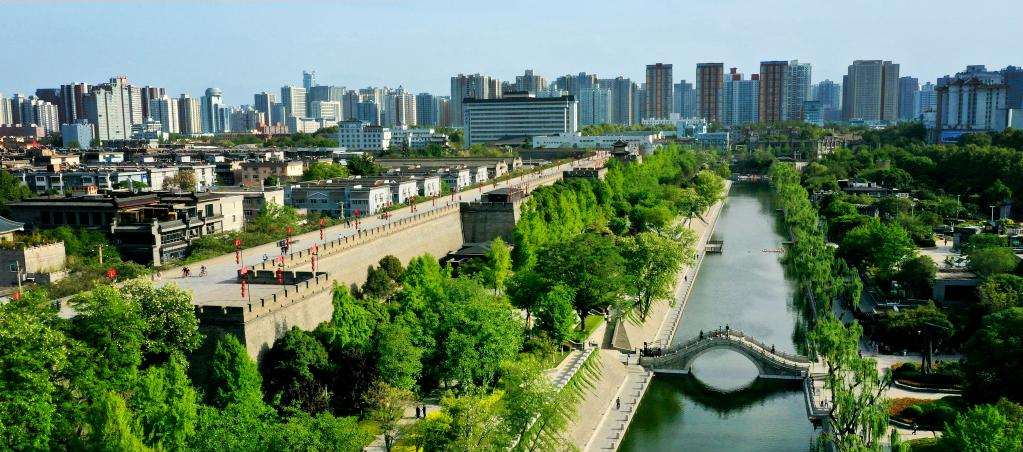
In May 2023, during my first visit to China after the pandemic, I was astonished by the development of Xi’an. “How Has Covid Changed China” chronicles the transformation of this previously unkempt city into a more modern metropolis of gleaming towers and high-tech zones interconnected by elevated expressways, metro lines and buses set on a canopy of lake-centred parks and green spaces. It was like time-traveling from 1980 to 2025 in the space of four years.
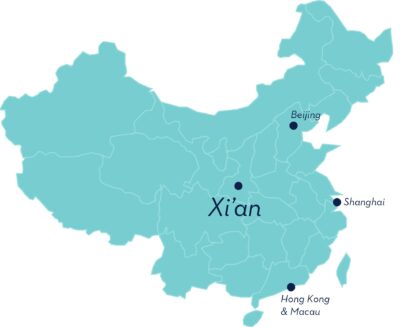
To understand the forces behind Xi’an’s incredible leap over the past five years, we need to look at government policy towards Xi’an over the past forty years, but particularly either side of the launch of the Belt and Road Initiative (BRI) of 2013. Prior to the BRI, exports routinely traveled from China to the rest of the world eastwards by ship. And as Xi’an is in western China, she was facing irrelevance and obsolescence.
China’s reforms of the 1980’s had led to a widely-celebrated economic boom along the east and south coasts where customs-exempt manufacturing zones located by rapidly growing ports were exporting a range of low-cost goods around the world. Meanwhile, because of poor inland infrastructure, foreign investors shied away from Xi’an which subsequently suffered slow growth and emigration. This imbalance was addressed by President Jiang Zemin’s “Go West Campaign” of 1999 which between then and 2006 prompted public investment of more than ~US$140 billion in transport, energy and connectivity to develop the attractiveness of western regions for investment. To forestall inevitable environmental complaints about this steel-woven carpet of concrete infrastructure, ecological protection along with education, were incorporated into the policy from the outset – over a million hectares of farmland and wasteland were converted into forest with farmers compensated for their resulting loss of income.
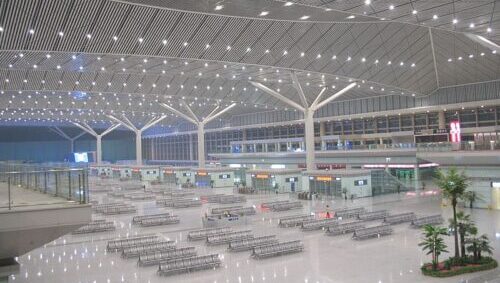
This long-term planning, a characteristic of Chinese governance, from two-decades ago is coming to fruition now. Apart from building smart new highways for China’s burgeoning middle classes and road-hauliers, a second airport terminal was completed in 2003 and a third in 2012. Also, Xi’an’s connection to China’s expansive high speed railway system, the largest in the world, was facilitated through the construction of Xi’an North Station. And again with an eye on the environment, investment was planned for a city metro system whose 9 lines covering 263 miles (423 km) opened between 2011 and 2023.
However, this first phase of development, pre-BRI, received a disappointing response from foreign investors. On the one hand, this was because the strategy had all been directed by the government which made western business people uncomfortable, and on the other, it was because it was ultimately misdirected. The billions spent on improving the infrastructure and educating the local workforce still did not compensate for the easy convenience of locating manufacturing capacity in the vicinity of the already established shipping hubs with their teaming populations.
This state of affairs was to be radically changed by President Xi Jinping, whose hometown is a one-hour drive from Xi’an. In 2013 he launched the Belt and Road Initiative (BRI), prompted by three separate factors. Firstly, China still needed to address the longstanding economic imbalance of its underperforming western regions. Secondly, Xi realized that China’s reliance on shipping for all its exports created a significant trade, economic and military vulnerability – any geostrategic rival could bring China to its knees by blockading the Malacca Straits through which nearly all China’s shipping passed. Lastly, as a result of the massive stimulus it unleashed following the 2008 financial recession, China had developed over-capacity in infrastructure-related capabilities, particularly in steel and concrete production. Coupled with a need to diversify its asset holdings from an over-reliance on US bonds, it saw an opportunity to leverage its infrastructural know-how through an international development loan and export program.
So what is the oddly-named Belt and Road Initiative? (BRI for short) Translated uncomfortably from the Chinese, “belt” and “road” refer to two different sets of envisaged trade routes. “Belt” describes the web of historic overland trading routes popularly referenced as the “silk road” linking Europe and China via Mongolia, Russia and Central Asia. This ancient commercial network has already been significantly rejuvenated through a gargantuan Chinese-built infrastructure program and even now continues to receive more investment from both China and participating countries. Xi’an has always been at the Chinese terminus of that network.
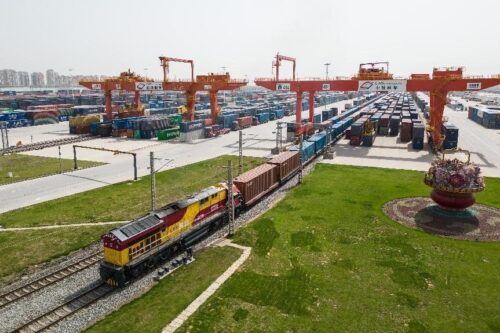
“Road” relates to a more logistically ambitious goal for China to access the Indian Ocean via complex corridors through South East Asia (particularly Myanmar) and via the adjoining Arabian sea through the Pakistan Economic Corridor. The westerly cities of Chengdu and Chongqing, which along with Xi’an form the “West Economic Triangle Zone”, are the gateways for this route. The BRI is therefore intended to increase China’s strategic resilience by reducing its reliance on the eastern and southern seaboards for exports. Of course, by reducing the cost and time to transport cargo from China westwards by rail to Europe, the BRI necessarily increases the attractiveness of western regions for foreign direct investment.
Although you wouldn’t know it from reading the papers, both foreign and local companies jumped at the logistical advantages of the BRI. The American company HP was an enthusiastic early adopter, proud to replace a 37-day journey from China to Europe eastwards by ship in 2009 with a 15-day journey westwards by rail ten years later. As a result between 2018 and 2019, rail volumes from Xi’an to Europe increased by a factor of 6! Then, in 2019 the volume of rail travel between Europe and China almost doubled. Suddenly, the western region boomed. And Xi’an was the place to be. In 2019, the government supported the rail project with an International Trade and Logistics Park along with a bonded area in an accompanying High-Tech Industrial Development Zone for cross-border e-commerce. Money poured in. Xi’an profited from US$31 billion of investment in private investment in 2019 alone. The city’s population grew from 6.2 million in 2013 to 8.8 million in 2023 and – despite the accelerated pace of construction – house prices rose 46% between 2016 – 2019. Similarly, the value of the city’s GDP or production tripled from US$57 billion in 2013 to US$156 billion in 2022. As a result of its fast population growth, Xi’an was able to extend its city limits and allocate more land to its fast-growing Qujiang District, where many of its new and soon to come luxury hotels are located. When I arrived in Xi’an in March 2023, having not been there since 2019, I was utterly astonished by the tail end of all that investment.
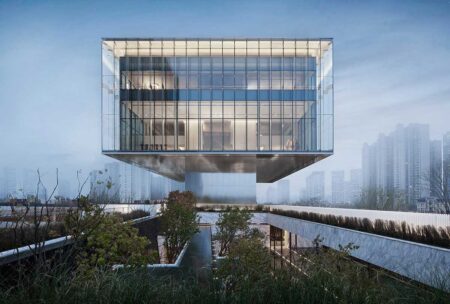
But Xi’an may well have hit its apogee just as Covid hit, because the pandemic has partly cut off the oxygen on which Xi’an thrived, namely foreigners’ access to the city. By June 2020, new business registrations had fallen by 40%. Tourism, along with equipment manufacturing and service outsourcing, was one of Xi’an’s pillar industries. Although domestic tourism provided some support, international tourism was completely interrupted from 2020 until March 2023, and because of reduced airlift to and from China, it is still only now beginning to recover. Furthermore, the conflict in the Ukraine and US sanctions on Russia have complicated Europe-bound rail logistics, though attempts are being made to create a new route that skirts Russia’s southern border across the Caspian Sea and the South Caucasus to Europe. Lastly, the economic and military standoff between China and the US has spilled into its relationships with Western Europe, Japan and South Korea, nullifying the Foreign Direct Investment on which Xi’an’s recent success and strategy has been predicated.
Following twenty years of continued investment Xi’an positively glistens. Expensively constructed government, commercial and residential buildings embellish a state-of-the-art infrastructural plan of social utopianist promise. However, tourism, a pillar industry, and reliance on continued foreign direct investment are being held hostage to the geopolitics of the moment. Without some kind of thaw in China’s relationship with western countries, Xi’an’s regeneration and even the ingenuity of the BRI are liable to stagnate. I and many Xi’an residents hope the world can find a way to avoid this fate.